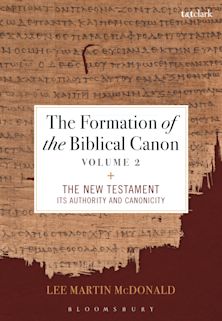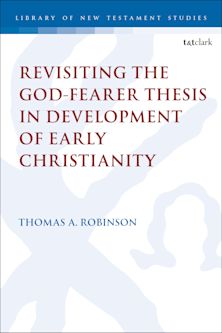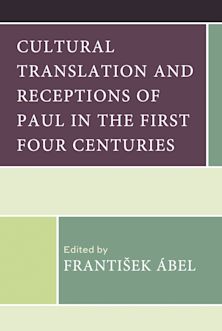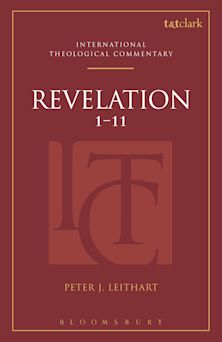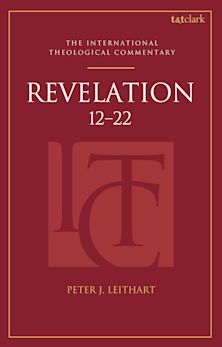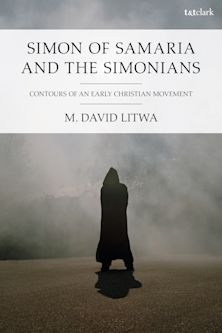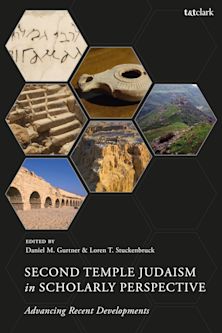- Home
- ACADEMIC
- Biblical Studies
- New Testament
- The Reign of God is Such as These
The Reign of God is Such as These
A Socio-Literary Analysis of Daughters in the Gospel of Mark
The Reign of God is Such as These
A Socio-Literary Analysis of Daughters in the Gospel of Mark
You must sign in to add this item to your wishlist. Please sign in or create an account
Description
This is a new analysis of the 'daughters' in the Gospel of Mark . Betsworth analyzes the 'daughters' in the Gospel of Mark : the woman from the crowd - whom Jesus calls daughter, Jairus' daughter (5:21-43), Herodias' daughter (6:14-29), and the daughter of the Syro-Phoenician woman (7:24-30). To demonstrate how the Gospel's first century audience may have heard these stories, Betsworth begins by examining 'daughters' in their ancient Mediterranean context. Betsworth then considers representations of daughters in select texts from the Septuagint and Greco-Roman literature - from the seventh and sixth centuries B.C.E. to the second century C.E. Although these depictions seem to be in contrast to the social-historical construction of daughters, Betsworth shows that in many ways the literary portrayals of daughters function to uphold the values of Greco-Roman culture - especially those of virginity before and faithfulness in marriage. These two lines of enquiry undergird Betsworth's investigation. From it she is able to show that the 'daughters' in the Gospel uphold the values of the 'reign of God', as an integral part of the Gospel's inclusive social vision of God's reign. This title was formerly the Journal for the Study of the New Testament Supplement , a book series that explores the many aspects of New Testament study including historical perspectives, social-scientific and literary theory, and theological, cultural and contextual approaches.
Table of Contents
List of Abbreviations
Chapter 1 - Introduction
I. Previous Scholarship on Daughters in the Gospel of Mark
II. Background of the Gospel of Mark
III. Determining the Function of Daughters in the Gospel of Mark
Chapter 2 - Social-Historical Status of and Attitudes about Daughters
I. Greco-Roman Family and Religion
II. The Life of Girls in the Greco-Roman World
III. Attitudes toward Daughters in the Greco-Roman context
IV. Conclusion
Chapter 3 - Literary Representations of Daughters
I. The Homeric Hymn to Demeter
II. Jewish Novels
III. The Plays of Menander
IV. Greek Novels
V. Conclusion
Chapter 4 - The Daughters in the Gospel of Mark
I. The Placement of the Daughter Cycle in the Narrative Context of Mark's Gospel
II. Mark 5. 21-43 - An Older Daughter and a Younger Daughter
a. The Older Daughter from the Crowd
b. The Young Daughter of Jairus
III. Mark 6.14-29 - The Daughter of Herodias
IV. Mark 7. 24-30 - The Daughter of the Syro-Phoenician Woman
V. Daughters and the Reign of God
VI. Jesus as the Son of God
VI. Conclusion
Chapter 5 - Summary and Conclusions
Product details
| Published | 30 Sep 2010 |
|---|---|
| Format | Ebook (PDF) |
| Edition | 1st |
| Extent | 176 |
| ISBN | 9780567113634 |
| Imprint | T&T Clark |
| Series | The Library of New Testament Studies |
| Publisher | Bloomsbury Publishing |
About the contributors
Reviews
-
Overall, Betsworth's analyses are logical. This book is an interesting examination of the topic at hand from a different methodological perspective.
Studies in Religion/ Sciences Religieuses
-
... an excellent, enjoyable and important study.
Journal for the Study of The New Testament, Volume 33 Number 5
-
This work will benefit upper level students and researchers as well as professors. Without hesitation, I would recommend this book to all serious Markan exegetes and college, university and, seminary libraries alike.
Religious Studies Review, Vol. 37, Issue 4
-
Sharon Betsworth offers a socio-literary analysis of daughters in the gospel of Mark that demonstrates how the four stories involving daughters in Mark 5-7 communicate the inclusive nature of the reign of God and characterise Jesus as the Son of God. In order to place the gospel in historical context, she examines both the legal and the social standing of daughters in the Greco-Roman world and their literary representation... I am impressed with the careful reading and the interconnections that she enumerates among the daughter stories. This work will contribute to the study of the gospel of Mark.
Victoria Phillips, West Virginia Wesleyan College, USA, Modern Believing
























